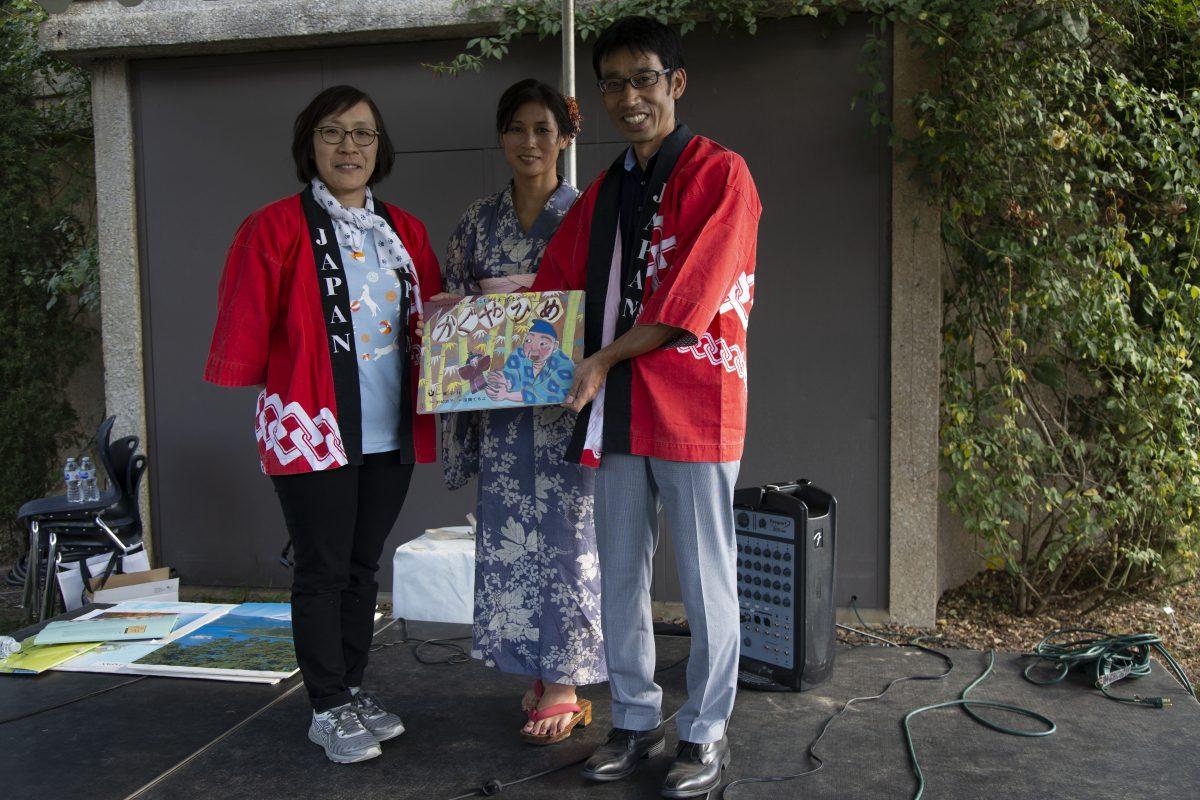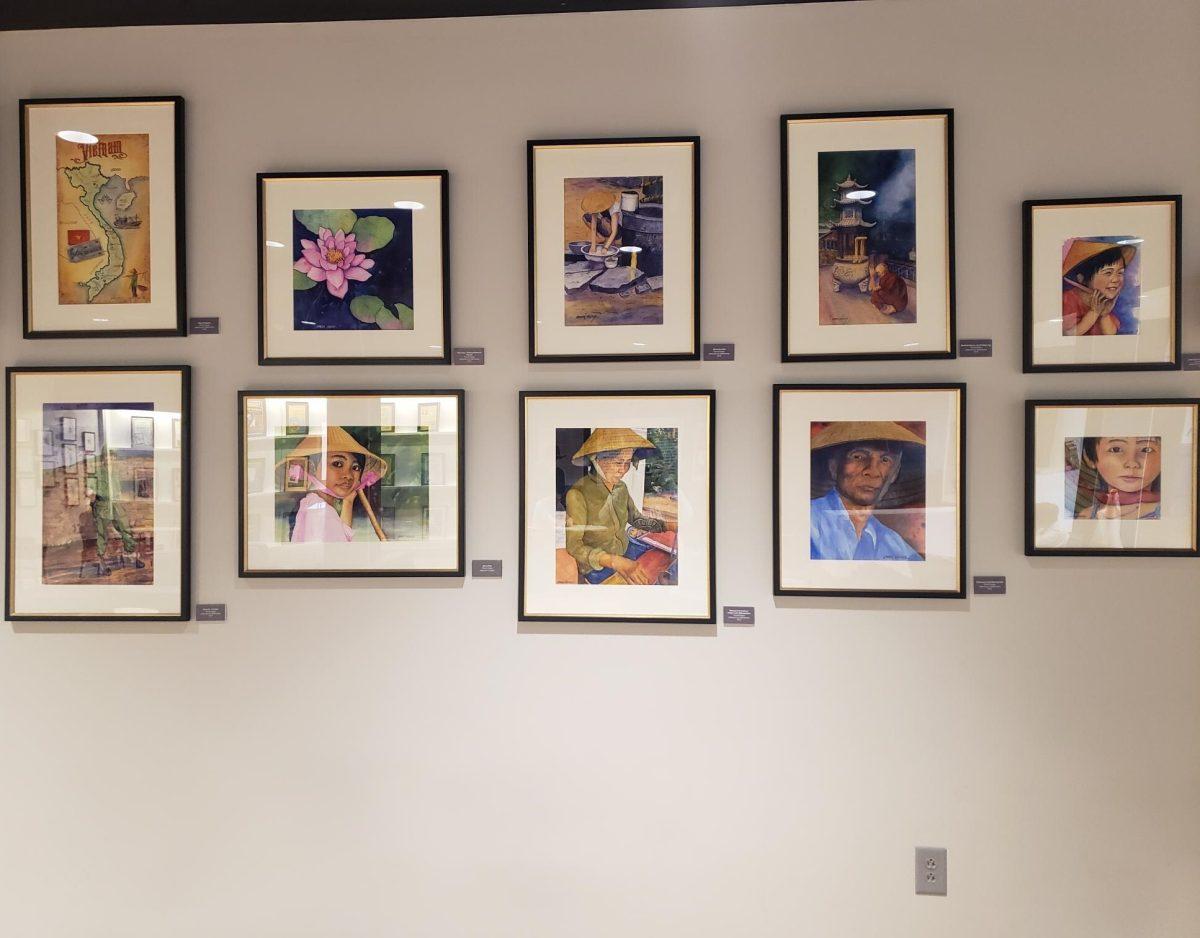Photos and Story by Sergio Pacheco/Contributing Writer
On Sunday, September 22, Cheekwood Estate & Garden celebrated its fifth annual Japanese Moon Viewing event. The event held a showcase of performances, activities and food that all reflecting on the Japanese tsukimi, also known as the autumn moon viewing tradition.
There were many performances to see, activities to try out and foods to taste. Although not required, some women wore a traditional kimono, which is a long, loose robe with wide sleeves and tied with a sash. The hands-on activities took place in the Frist Learning Center courtyard, where people could try origami art, calligraphy, haiku flags or Teru Teru Bozzu. Each table had volunteers who taught attendees how to make certain arts and crafts. The origami table taught guests, mostly small children, how to fold a single sheet of square paper into a sculpture, step-by-step.
At the calligraphy table, volunteers asked guests for their name so they could write it by hand using a brush dipped in ink. Once they write someone’s name, the volunteer would explain what the Japanese characters meant and how they were pronounced.
The table with the Haiku flags helped by explaining what a haiku is, which is a three-line poem with seventeen syllables. Guests then had the opportunity to write their own haiku on small pieces of plastic and stick them on a small wooden stick, to represent a haiku flag.
The fourth activity, Teru Teru Bozu, also known as Japanese rain-prevention dolls, are traditional handmade dolls made from cloth. Guests interested in the hands-on activities had all day to participate and take their art home.
Owen Reich, owner of Tupelo Farms, bonsai professional and aesthetic pruner, was in charge of the bonsai display in the Bradford Robertson Color Garden. Reich brought seven different bonsai trees, with each of them looking more unique than the next.
At the Beer Garden stage, the Kamishibai Japanese storytelling took place. Yoko Wakatsuki, the storyteller, shared two stories, “The Tale of the Bamboo Cutter” and “The Inch-high Samurai.” “The Tale of the Bamboo Cutter” reflects on what the moon symbolizes. It is about an old childless couple who were blessed with a beautiful child, after the bamboo cutter, Taketori no Okina, cut open a shiny stalk of bamboo. The couple named the child Kaguya-hime, which means ‘Shining princess of the supple bamboo’. Five princes came to Taketori no Okina’s house to ask for his daughter’s hand in marriage, but she marries none because they cannot fulfill her requests. Kaguya-hime told her adoptive parents that her people were from the Moon and one night they would return for her. Although the Emperor of Japan surrounded her house with guards, when Kaguya-hime’s people came for her, the light emitted from the sky was so bright that it blinded the guards, making it impossible to protect the princess. Kaguya-hime’s adoptive parents were saddened and became sick. They took the last of her belonging with them up to Mount Fuji, because it was said to be the closest to heaven, and burned all together in hopes of reuniting with her. Although the stories were meant for children, guest of all ages enjoyed their telling.
There were multiple tea ceremonies in which Sachi Uemoto Groves demonstrated the traditional process of preparing and serving tea during the important occasion. Guests were asked to volunteer to take part in the ceremonies with Groves and follow her instructions. As the sun started to set, guests were welcome to attend the koto and taikos drum performance. The performance alternated between one artist who played the koto, a thirteen-stringed instrument, and taiko, which are a set of various Japanese drums.
The closing ceremony was presented at 8:30 p.m., where guests were thanked for attending. “For the past two years during it has rained during this celebration, but we finally get a clear sky this time,” said Cameron Manning, host for the closing ceremony. In the Japanese atory of the moon rabbit, an old man begged for food from a fox, monkey, and a rabbit. The monkey gathered fruit, the fox killed a lizard, and the rabbit offered itself because it only knew how to gather grass. The old man revealed himself as Sakra, ruler of heaven, and drew the image of the rabbit on the moon for everyone to see. It was stated that the lunar image of a rabbit is still draped in the smoke that rose when the rabbit cast itself into the fire.
To contact Lifestyles Editor Brandon Black, email lifestyles@mtsusidelines.com.
For more updates, follow us at www.mtsusidelines.com, on Facebook at MTSU Sidelines and on Twitter at @Sidelines_Life.





















